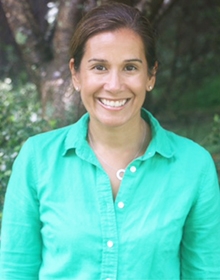Getting to Know: Dr. Diane Elliott
With 20 years of education experience spanning from K-12 through colleges and universities, Dr. Diane Elliott joins the School of Education to provide her expertise to the future teachers of tomorrow.

Dr. Elliott has taught courses on research designs and methods, quantitative analysis and statistics, and legal, social, and political issues in schools and the community. She sat down with Holy Family University to discuss her background, problems facing men and women in STEM, and finding hobbies in a house with two small children.
Can you tell me about your background and what brought you to Holy Family University?
I have been working in the education field for nearly 20 years, first in K-12 and later in higher education as a professor and administrator. My collective experiences prompted me to pursue a doctorate, which I earned from New York University in 2010. After a postdoctoral appointment at the Education Testing Service, I taught research methods, statistics, and assessment and evaluation at various institutions. My desire to continue to teach these areas brought me to Holy Family University. I’m looking forward to working with the students here.
Can you describe some of your current research initiatives?
I have two active and complementary lines of research, both of which center on issues of educational equity. The first line of research examines the intersection of K-12 and higher education and seeks to understand disparities in educational attainment by analyzing the education trajectories of disadvantaged students. More specifically, my research integrates the education, psychology, sociology, and law fields to explore how personal characteristics, such as psychosocial attributes and cultural identity, interact with school and home environmental contexts to impact the educational success, college readiness, and educational attainment of disadvantaged students. My second line of research examines issues of educational equity from an assessment perspective and pays attention to the evaluation and assessment of student learning and programmatic interventions aimed at improving educational outcomes of students.
What is your classroom philosophy when helping educate the future teachers of our world?
My style emphasizes my role as a facilitator to encourage dialogue. To achieve this, I frequently use current events, my own experiences, and especially students’ own personal and professional experiences as a foundation for grounding concepts and integrating existing knowledge with new understandings. It’s my belief that this approach conveys to students the idea that they already have skills related to the course topic, which enhances both interest and engagement with my course.
Some of your most recent work has focused on STEM—an interesting topic for both male and female students. What is your opinion about the current state of STEM, and how do you attract more male and female students into this specific segment?
For the sake of innovation and our economy, we, as a nation, are in desperate need to attract and retain more students in STEM fields, especially women, who continue to be under-represented in these fields. How we go about achieving that goal is more difficult to answer. On the one hand, there has been a proliferation of programs to prompt early grade school interest in STEM fields, and by all accounts they seem to be meeting their objective. Yet, as students progress through the education pipeline, interest appears to wane. Some of my research suggests the transition to college is one point in particular where students alter their interest in STEM fields. Many students who begin in STEM related majors change courses during or after the first year. What I’ve found is that some students are not sufficiently prepared for the rigors of a STEM curriculum and others modify and realign their goals after self-reflecting on their true interests and/or after experiencing poor academic performance in early core courses. This variability in reasons is precisely what makes this issue so complicated. In my mind, the solution is to simply continue to develop and test multiple interventions, bearing in mind that one size does not fit all.
What are some of your hobbies outside of the classroom?
I once saw a meme that said something like, "I never know what to say when people ask me what my hobbies are. I’m a mom. I enjoy trips to the bathroom alone and silence." I feel being an academic is equally consuming. As an academic and a mother of two children that are four and seven, I don’t have much time for hobbies. That said, whenever I can, I make time for running, which I hate doing but it helps keep me sane, reading, yoga, and photography. This past summer I earned my boating license, so now I can be a threat on both the roads and waters in and around the New Jersey and Pennsylvania area.
